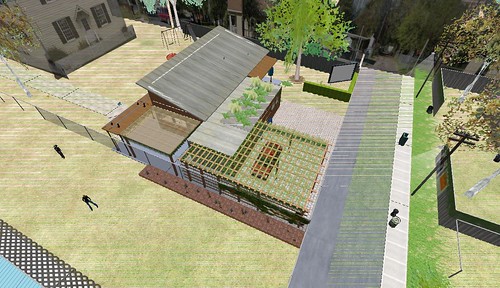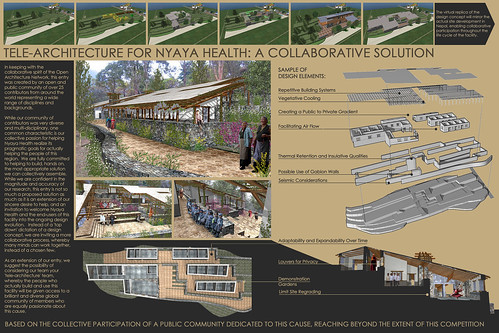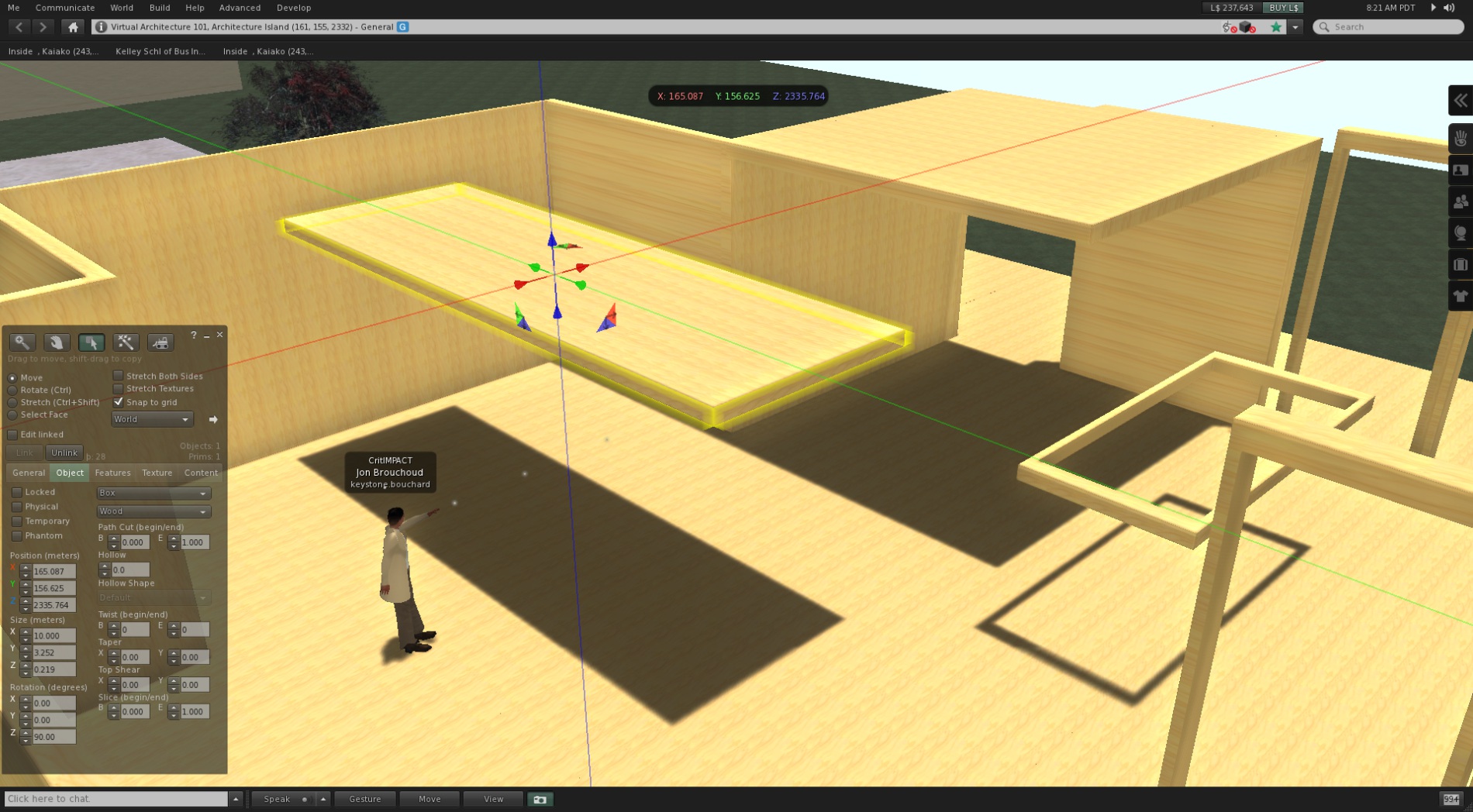
They call it the ‘Open Neighborhood’ project – and it is really a site to see. This partnership between the Town of Acton and researching faculty and students from the Urban and Environmental Policy and Planning Department at Tufts University is quite visionary, and will be exciting to watch unfold in the months ahead. They built a replica of an intersection in the Town of Acton called ‘Kelley’s Corner ‘ in order to engage residents and neighbors in the process of establishing a vision and master plan for this intersection.
From the Open Neighborhod website:
“Come explore a virtual model of Kelley’s Corner in the online world ‘SecondLife’. Then, you become the planner and create your vision. What would you change? Log in from home or come to a community night at the high school to rebuild Kelley’s Corner with your neighbors. The OpenNeighborhood Project will share your ideas with your community and you can see what your neighbors will design.”
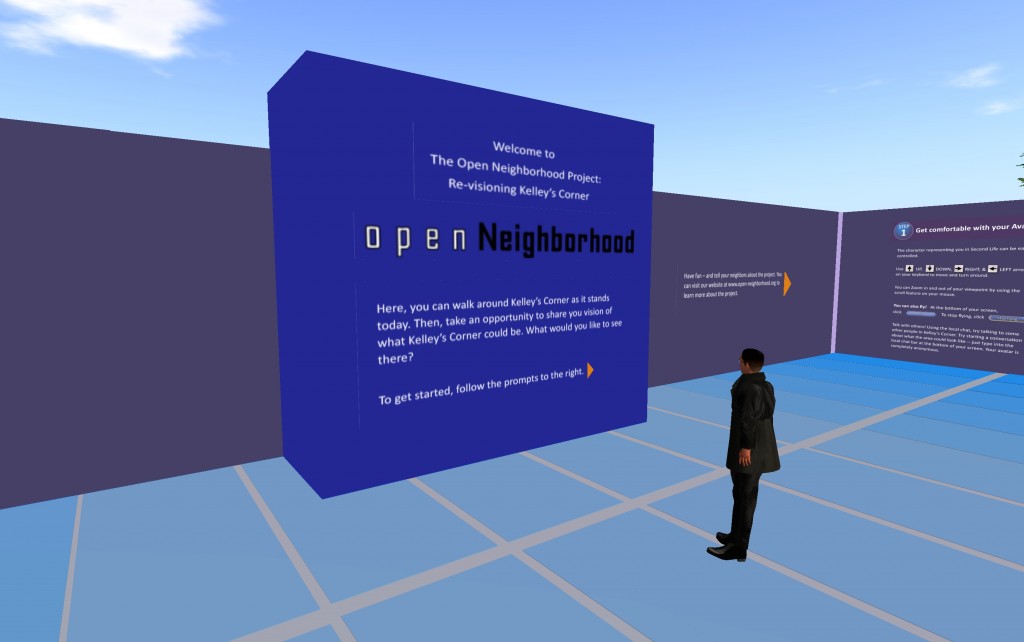
What I find most interesting is their blended use of Second Life, a web interface and a Google maps page. In this case, residents can use Second Life to explore the virtual rendition of the neighborhood, but they need not learn the in-world building tools to express design ideas. Instead, they use an interactive web site that enables them to drag and drop icons, such as building elements, paving, landscaping, and more. They then ‘publish’ the map they’ve created, and it appears in the Second Life ‘gallery’ space.
They also established a Google maps ‘Issues Map‘ where people can pinpoint specific ideas and challenges at this location.
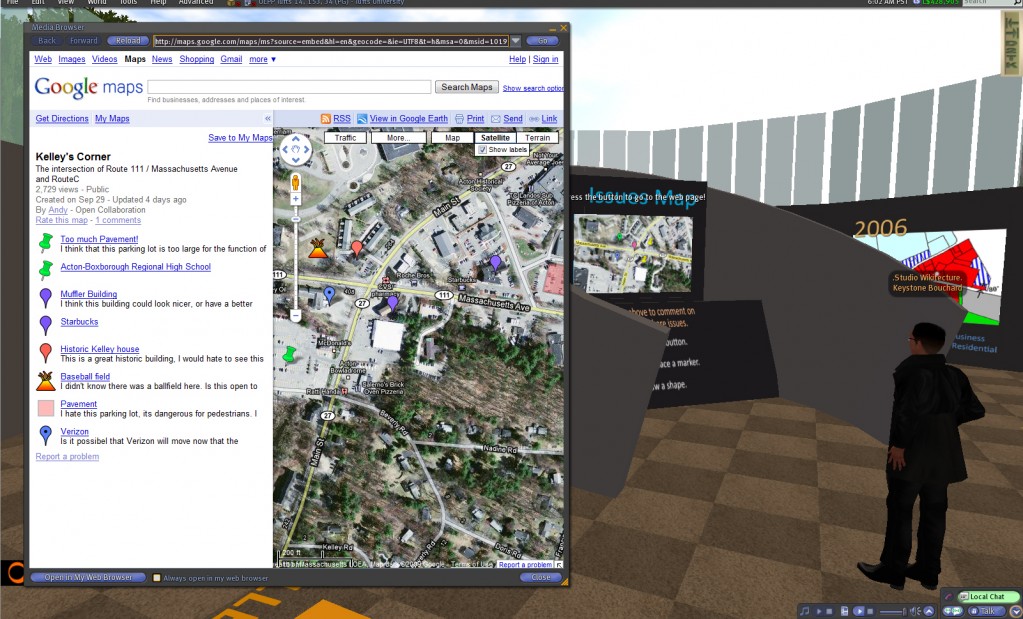
At the end of the project, Tuft’s students will then replicate ideas that have been suggested within the virtual replica in Second Life, where visitors will have a chance to experience the potential solutions in this immersive, online, multi-user environment.
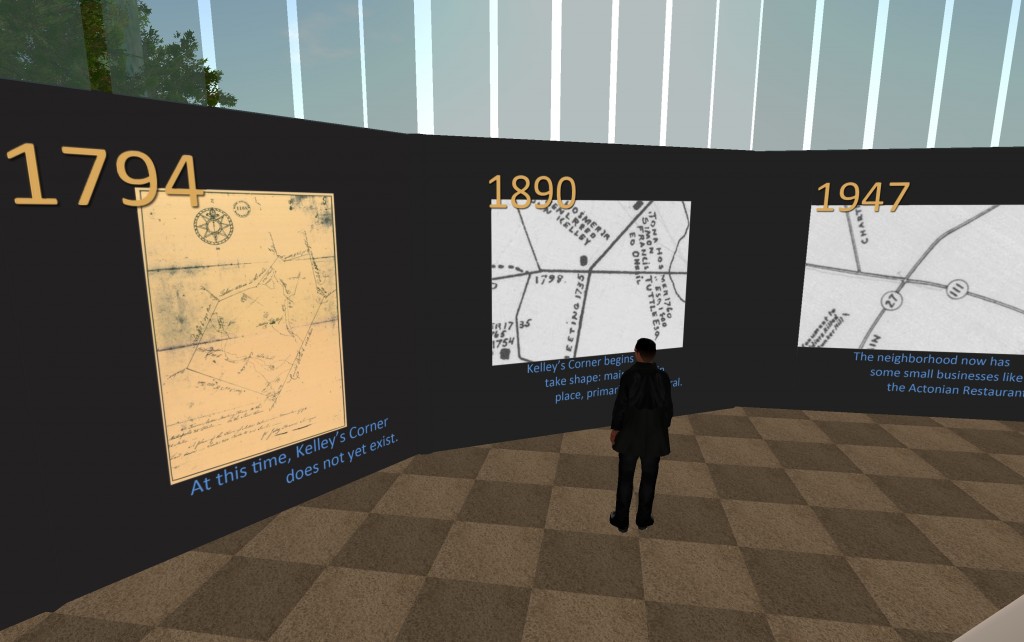
There have been a variety of different projects built within Second Life, aimed at encouraging a more participatory design process for physical-world locations. This project shares some features and a vision similar to projects like the ‘Landing Lights Park‘ project, which used Second Life to enable residents to arrange and save the location of 3D park elements (benches, walkways, gazebos, trees, etc.) on a scaled-down map of the park.
Open Neighborhood’s flash interface is something like New York City Department of Parks and Recreation’s Park Planner flash-based park design tool, but a much higher degree of site specificity and a wider variety of elements to choose from.
It also shares a lot in common with what Hub2 was working toward with their Library Park project. http://hub2.org/
“Hub2 seeks to enable local neighborhoods to participate more meaningfully in the design and development of their own public spaces. Residents engage in a process that employs 3D tools and problem-solving techniques to articulate a common vision reflecting the participants’ values.”
Another project in Second Life that sought to engage residents in a neighborhood planning project was the University of Texas ‘Alley Flats’ project, where students built several designs that were to be built – and enabled residents to experience, visualize and provide feedback on the designs before construction started:
Studio Wikitecture also attempts to utilize Second Life in a more participatory design methodology, using the (now open source) ‘Wiki Tree’ tool. Their interest is in exploring the application of an open-source paradigm to the design and production of both real and virtual architecture and urban planning.
Architecture students at Delaware Tech also used Second Life to to work with existing communities toward investigating proposals for sustainable design housing prototypes for use in the redevelopment effort in Cape Town, South Africa to replace existing marginal housing in the township areas.
Each of these projects introduces new ideas, technologies, and methodologies to help engage more widespread participation in design and town planning. I think it would be interesting to bring these groups together, to compare notes and see what we can learn from each other. Clearly virtual worlds offer a unique opportunity to enable community participation in design on a whole new level, and we’re just scratching the surface of what is possible!
Are there any community engagement projects I missed? What are some common challenges these projects face? What kinds of tools would help facilitate this kind of collaboration? Would some kind of seminar or discussion between groups that have attempted projects like this be useful?



